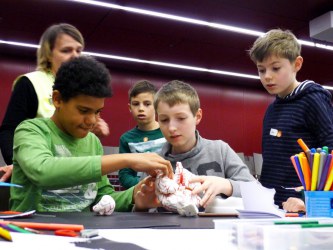Andrew Whittington-Davis
Learning can take place anywhere and at any time – so how do learners connect with science, if at all? Over the past two years, partner ZSI with the support of all 19 SySTEM 2020 practice partners have been carrying out a two-year longitudinal survey within the SySTEM 2020 project to investigate individual STEAM learning ecologies of young learners between age 9 and 20. This report (accessible below) focuses on the process and results of this survey, providing information on the learners social and family background, allowing us to analyse inequalities in science learning.
Overall, this longitudinal survey illustrates persisting inequalities in science learning based on age, gender and educational capital. All of these factors influence the way learners connect with science, yet it is their specific intersections that form a learner’s individual living reality. We see that male-identifying learners from educationally affluent backgrounds are most likely to connect with science. This points to the persistence of an androcentric and classist concept of science. The analysis re-emphasised the need to delve into these intersections instead of merely focussing on one dimension when tackling inequalities in science learning in formal and informal settings.

